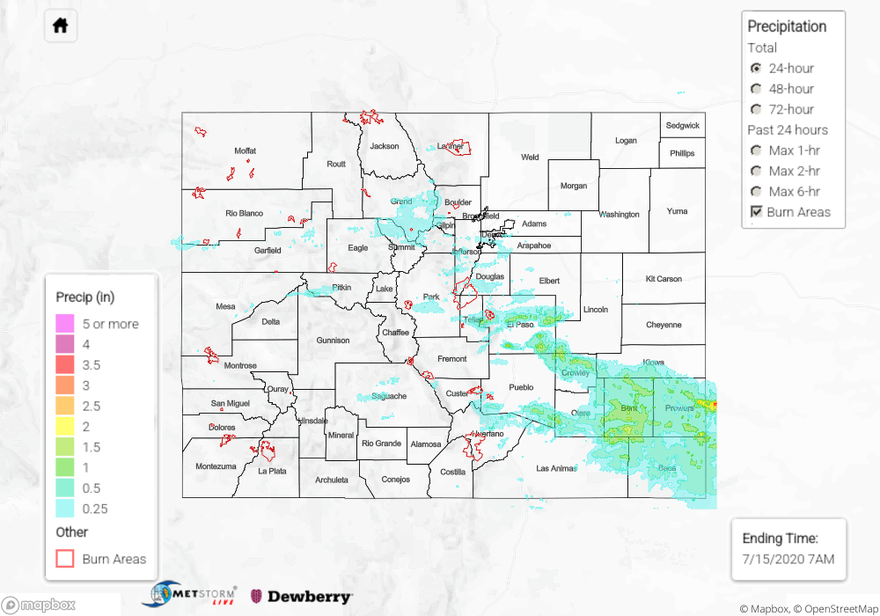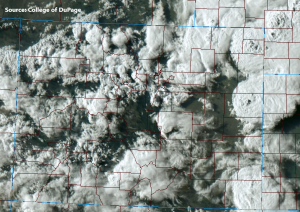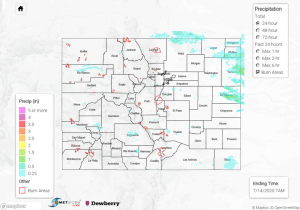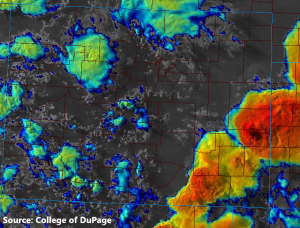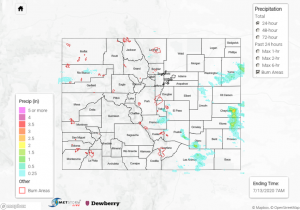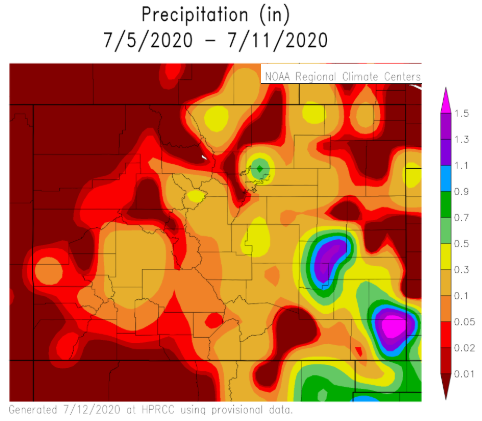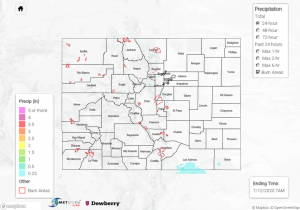Issue Date: Wednesday, July 15th, 2020
Issue Time: 10:40AM MDT
Summary:
Severe thunderstorms fired over the mountains just west of Colorado Springs and moved southeast through the Southeast Plains yesterday bringing with them heavy rain, hail, and even a few tornado reports. Between noon and 5PM yesterday, storms trained across El Paso County and dropped up to 1.5 inches of rain just west of Colorado Springs. A heavy rain report was submitted on the northwest side of town indicating 1.5 inches of rain fell over 30 minutes, which is between a 25 and 50 year storm. Numerous CoCoRaHS and USGS rain gages corroborate that near or just under 1 inch of rain fell over the western side of the city and into the mountains just west. NWS Pueblo issued a Flash Flood Warning over this area at 3:56PM, but no flooding was reported as of this morning.
QPE indicates a swath of heavy rain totals between 1 and 2.5 inches from El Paso County southeastward through Bent and Prowers counties as severe thunderstorms tracked over this area from 4PM to 10PM. The highest report of 1.9 inches was from a trained spotter in southern Prowers County, and several CoCoRaHS and CoAgMET rain gages measured just over 1 inch of rainfall over the Southeast Plains. The severe storm over Bent country produced a tornado in Las Animas, CO, and thankfully no damage or injuries were reported. Although a large area of the Southeast Plains picked up over 1 inch of rain, no flooding was reported yesterday. This rainfall was very beneficial for the ongoing drought. Total rainfall amounts just across the border (east of Prowers) were estimated between 3 and 4 inches!
The western part of the state saw thunderstorms and showers over the high terrain, but another day where there was more wind that rainfall. Gusts up to 58 mph were recorded over the Grand Valley, Central Mountains, Northwest Slope, and Northern Mountains. Two isolated locations in the Central and San Juan Mountains picked up just over 0.7 inches of rain according to CoCoRaHS reports, but most locations reported up to 0.3 inches of rainfall. Some of the higher rain reports are likely due to some storms training over an area for an extended period, as indicated by radar. Showers lasted well into the night over the Southwest Slope and San Juan Mountains. No flooding was reported.
For rainfall estimates in your area over the last 24 to 72-hours, scroll down to the State Precipitation Map below.
